8 types of medication given as nasal sprays
by egpat 03 Aug 2019
If you have cold and nasal block you may just pump a nasal spray into your nostrils to get quick and prompt relief from stuffy nose. It may contain nasal decongestants which clear nasal pathway by vasoconstriction. Do we use nasal sprays all time for only this purpose? Do they contain only decongestants intended for local action? Interestingly, nasal sprays may contain many other medications and in fact, these formulations can be used as one of the routes of administration of drugs into our body.
So let’s go here with to discuss which type of medication is given as nasal spray and in which clinical condition.
1. Antihistamines
When we will choose nasal sprays as one of the routes of administration of drugs?
Let’s take an example of allegic rhinitis or seasonal rhinitis. In such a condition an allergen like pollen grains may irritate your nostrils due to release of so called allergic mediator histamine. This amine chemical mediator can trigger a local action to produce a set of allergic reactions which make all discomfort thought the day. It may cause swelling, itching, sneezing and reddening of the nostrils all they set to accumulation of fluids and a nasal block.
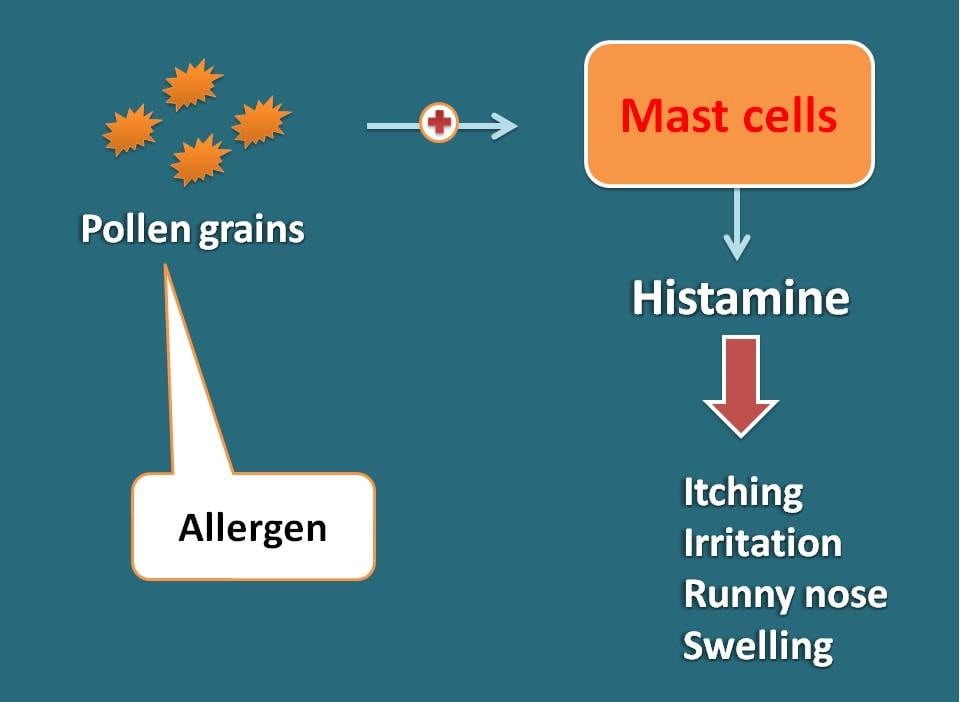
To counteract these effects we should administer antihistamines, of course, either by oral rout or by nasal route. When we need mainly local action at nostrils, we may go with nasal sprays as choice of administration.

Antihistamines like azelastine and olopatidine can be administered as nasal sprays for allergic rhinitis.
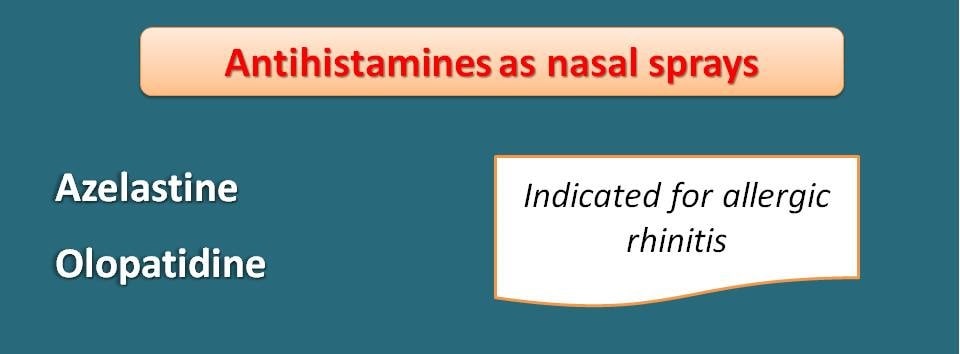
2. Mast cell stabilizers
This is another category of drugs that again fight with allergic conditions such as allergic rhinitis and asthma. But of course they work by a different mechanism. Instead of blocking histamine action like antihistamines do, they block the release of histamine and other mediators from mast cells by stabilising the membrane.
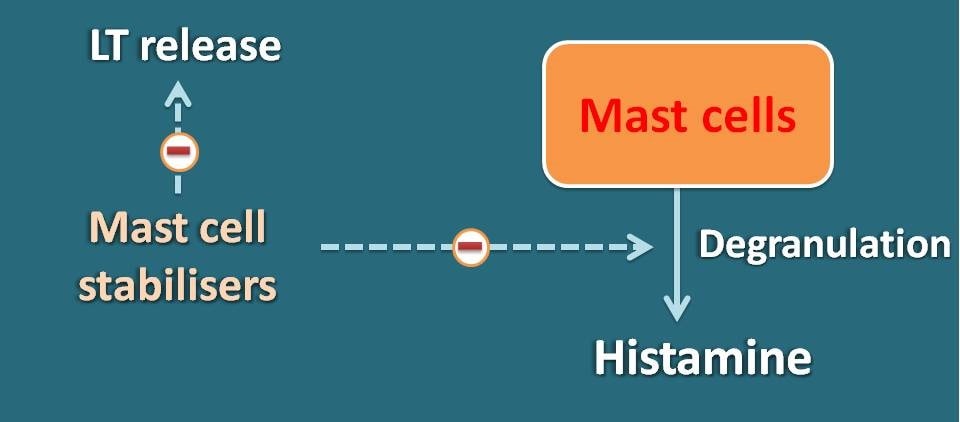
We have two drugs in this category such as nedocromil and cromolyn sodium. The former drug is not given as nasal spray but administered as metered dose inhaler in conditions like bronchospasm and asthma. On the other hand, cromolyn sodium is given as nasal spray to treat allergic rhinitis.
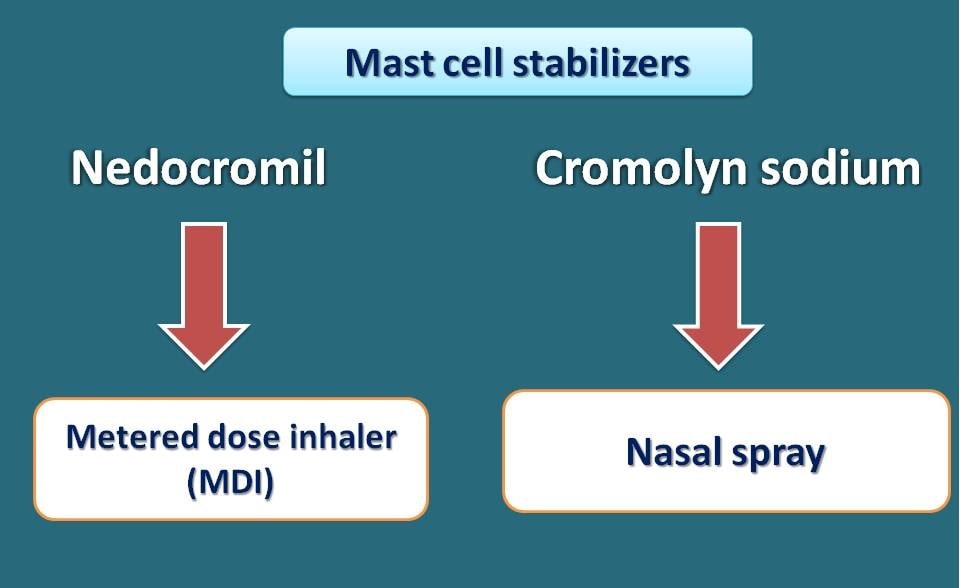
3. Corticosteroids
We know that corticosteroids reduce inflammation that is often associated with allergic conditions. They can be indicated for treatment of asthma, allergic rhinitis, skin inflammation and other allergic reactions.

How they are given?
Corticosteroids can be given by various routes such as oral, parenteral and nasal routes. Among them if you want to produce a local effect at nostrils, again nasal sprays are of good choice to use. Many drugs like ciclosenide, budesonide, mometasone, fluticasone, beclomethasone and triamcinolone can be given as nasal spray in treatment of allergic rhinitis.
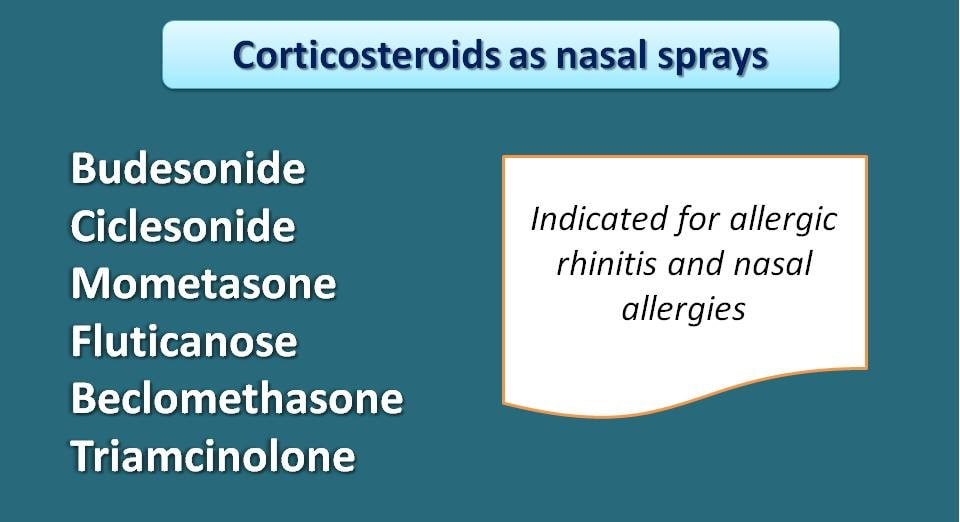
Few of the nasal sprays may also contain a combination of antihistamine and corticosteroid. For example, azelastine can be given in combination with fluticasone.

4. Nasal decongestants
Many of the times when we think about nasal sprays we may look forward to use them for a stuffy nose. The simple purpose of the medication in this condition is to just clear the congestion that blocks the nasal air pathway. Here nasal decongestants like oxymetazoline, xylometazoline and pseudoephedrine play a key role in relieving congestion.
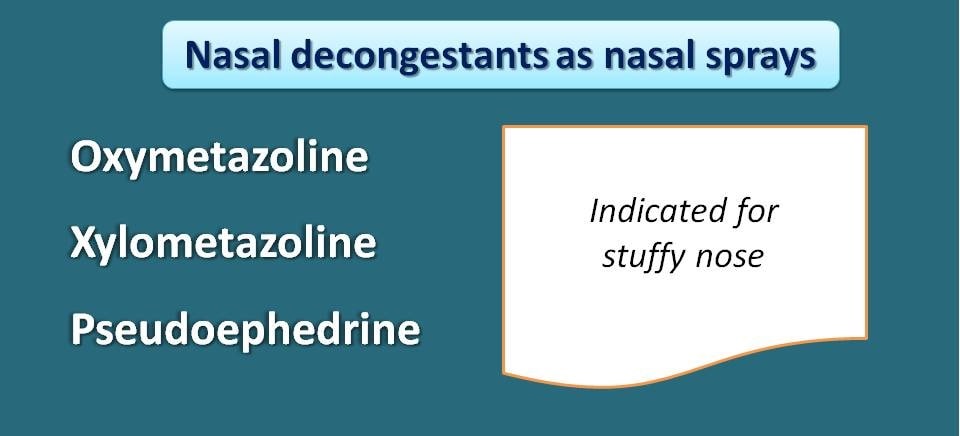
One of the limitations in their use is that these nasal decongestants should not be used for more than three days. Even they provide a quick relief from stuffy nose still they may prone to induce rebound congestion when they are used continuously.
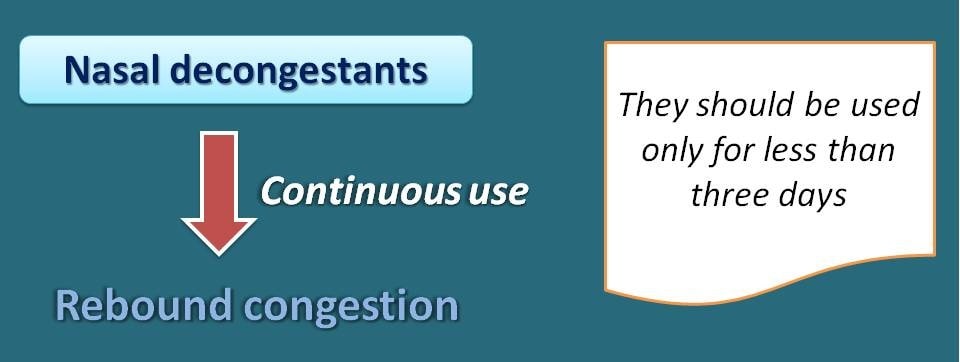
5. Saline nasal sprays
As an adult you may use nasal decongestants for immediate relief of stuffy nose, but what about their use in infants? Are they safe? Definitely they are not safe in the children below 6 years of age. Then what is the alternative medicine for that?
Simply you can relieve congestion in infants by spraying saline solution. Even they don’t contain any medication but filled with sodium chloride, they can clear any nasal block due to their diluting action.
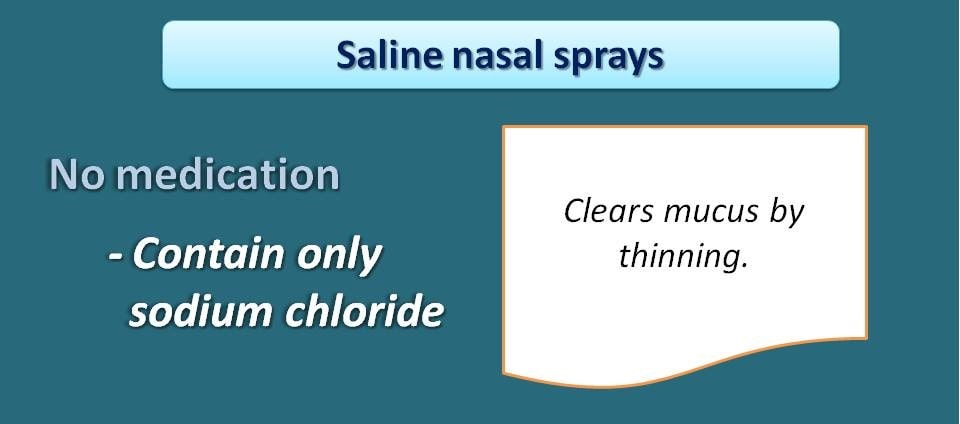
6. Anticholinergics
Ipratropium is an anticholinergic drug that acts as bronchodilator that can be used in chronic obstructive pulmonary disorder (COPD). This drug can also be given as nasal spray for treatment of runny nose and allergic rhinitis where its action is again intended for a local action.
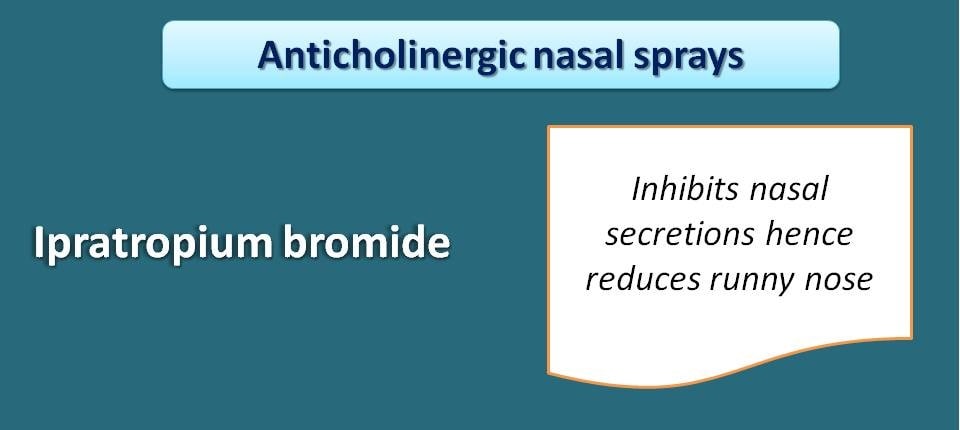
As an anticholinergic, this drug inhibits the glandular secretion and therefore dries the nasal fluids relieving from runny nose.
7. Calcitonin
Till now we have seen a list of drugs all intended for local action at nasal pathways. But this pathway can also act as one route for systemic administration of the drugs. Calcitonin is such a drug indicated for osteoporosis that is given as nasal spray.
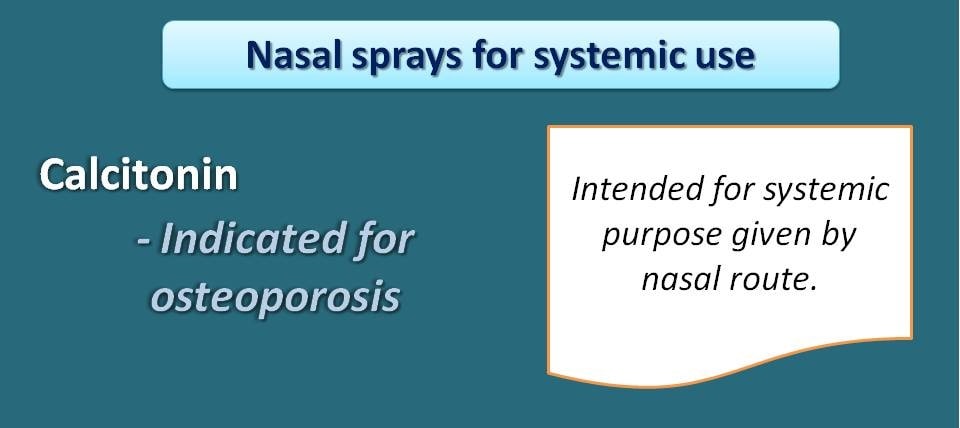
One of the advantages of nasal sprays compared with oral route is the improved bioavailability as they bypass the first pass metabolism

8. HPMC
Just like saline nasal sprays, hydroxypropyl methyl cellulose (HPMC) can be given as dry nasal spray without any medication. This HPMC works by absorbing the water and forms a gel like structure which captures any allergens and prevents their contact with mucus.
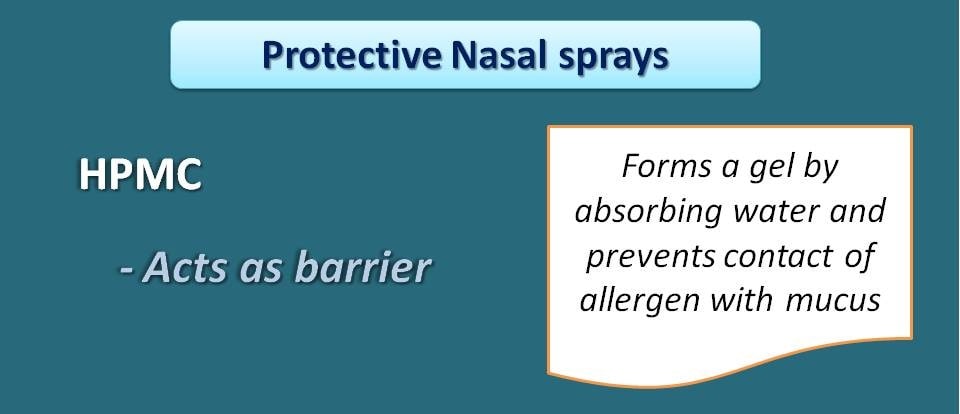
In this way, these nasal sprays mechanically entrap allergens and therefore indicated again in allergic rhinitis.
Conclusion
That’s for right now! These are the list of drugs currently available in the market as nasal sprays. Many of the nasal sprays are directed for local action but few like calcitonin is used for systemic purpose. This list may be increased with new drugs entering into this route of administration in the near future. Let’s hope the best and an effective treatment!